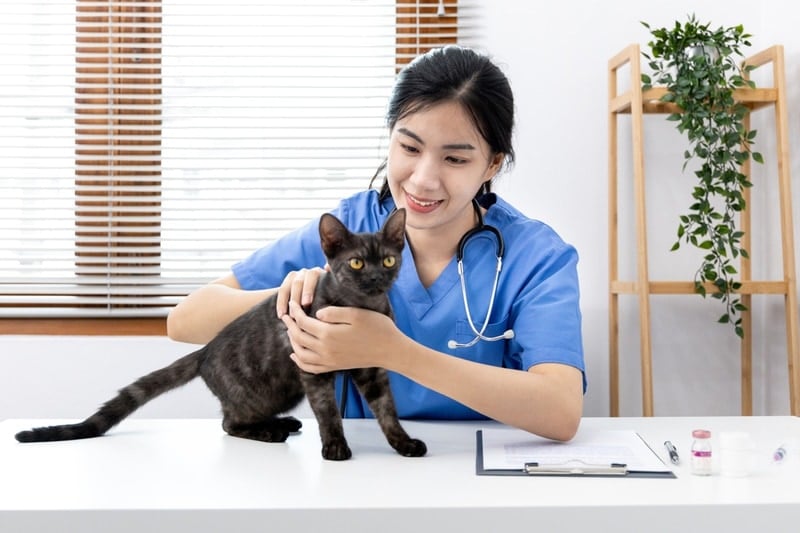National Pet Wellness Month is when veterinarians and pet lovers promote the importance of giving companion animals high-quality health care year-round. In the past, organizations and veterinarians have worked to get the word out about pet aging and the need for regular veterinary visits.
National Pet Wellness Month runs for the entirety of October, and it’s the perfect opportunity to learn more about ways to keep cats in top shape at every age.
Why Are Regular Checkups So Important for Cats?
Regular visits to the veterinarian ensure that any health issues that may be developing are discovered and addressed sooner rather than later, which often improves outcomes and makes managing medical conditions substantially easier.
Veterinarians usually recommend that healthy adult cats in their prime years have a checkup at least once a year. Cats older than 7 benefit from twice-yearly appointments to ensure they’re not suffering from chronic conditions.
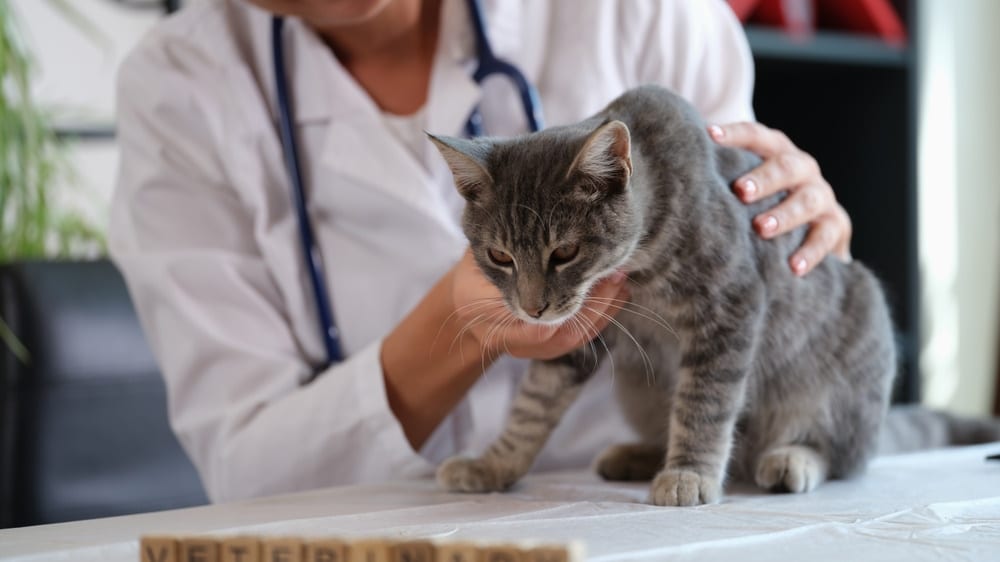
What Are a Few Ways to Keep Cats Happy and Healthy
In addition to regular medical checkups, there are a few basic tasks pet parents can do to support their cats’ overall health and well-being, such as providing nutritious food, sufficient exercise, plenty of mental stimulation, and ensuring cats have comfortable environments.
1. High-Quality Food and Treats
Cats require diets that are high in protein, and they also have specific needs for particular vitamins and minerals. Products with an Association of American Feed Control Officials (AAFCO) statement of adequacy contain the nutrients required to keep cats zooming along.
Keep in mind that cats’ nutritional needs change over time. Kittens require special diets, and older cats benefit from meals that provide support for joint conditions. Products are also available to help cats with medical issues like kidney disease and urinary tract problems.
Proper hydration is also fundamental to feline health, so providing fresh water at all times is essential. Fountains sometimes encourage cats to drink more since the running water tempts them to take a few extra laps.
2. Daily Exercise
Obesity is a significant problem in domestic cats; about 60 percent of North American kitties weigh too much 1. Overweight cats often live shorter lives and are prone to developing conditions such as high blood pressure, arthritis, and heart disease.
Because getting cats to lose weight can be quite a challenge, taking steps to prevent them from gaining weight in the first place is vital to supporting their overall health and well-being. Active playtime is a great way to get cats moving and burning a few calories. Cats enjoy short bursts of activity, and most do best with play sessions that last around 10 minutes or so.
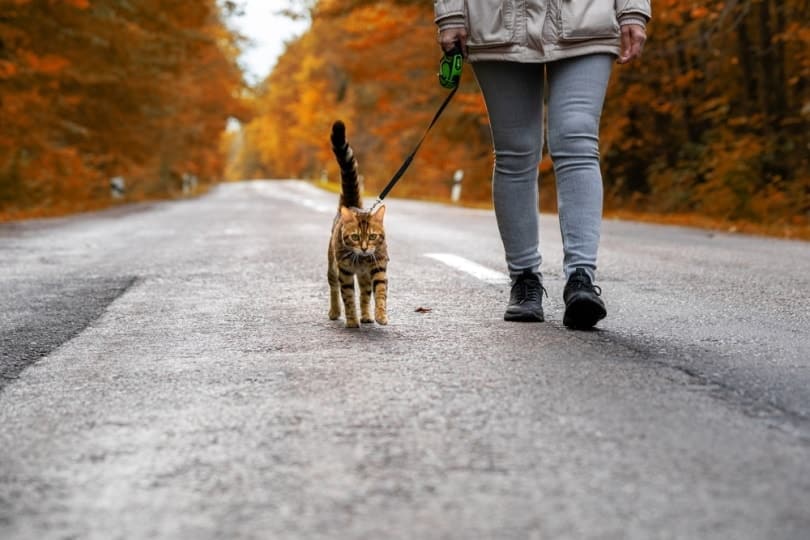
3. Mental Stimulation
Just like people, cats need activities to keep them engaged and busy. Those searching for ways to keep themselves occupied often get into mischief, but boredom can also cause them to become stressed.
While playtime provides mental stimulation, cats benefit from having a few activities specifically designed to engage their minds, bodies, natural hunting instincts, and problem-solving abilities.
Food puzzles allow cats to use their brains to determine how to free the treats. Training also provides mental simulation, and most cats can be trained to do basic things such as respond to their names, sit, and shake hands. They can also be trained to walk on leashes. Supervised walks give indoor cats time to enjoy fresh air and explore new scents.
4. Cat -Friendly Touches
Cats typically thrive in environments that don’t present challenges to their natural instincts. Because scratching is fundamental to being a cat, having many scratchers made of different materials helps cats feel comfortable, and sofas last longer. Keeping litter boxes incredibly clean and having enough on hand in homes with more than one cat is also vital to keeping cats happy and healthy.
Cats love to climb and enjoy the view from high places. Cat trees provide places for pets to climb and hang out above it all, and many include scratching areas. Comfortable hiding places where they can relax alone are also essential for cats’ mental health.
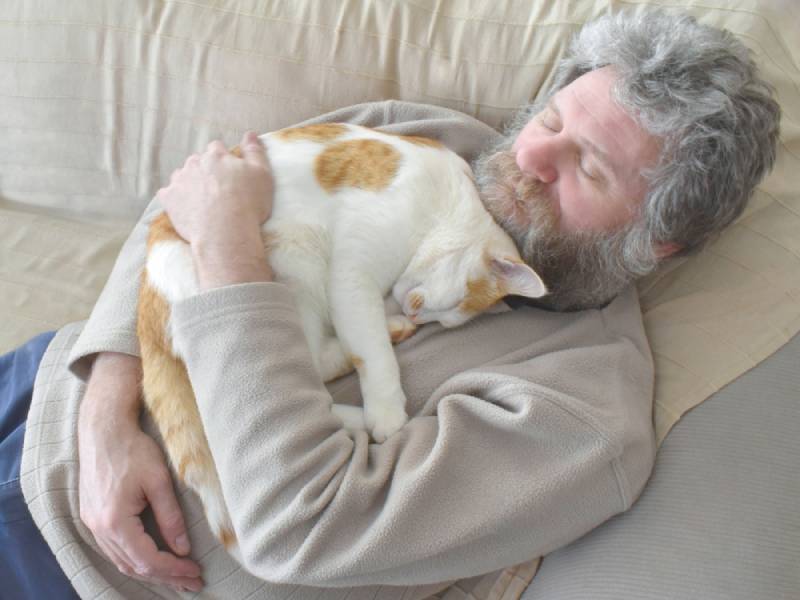
5. Regular Dental Care
Dental disease is prevalent in cats, particularly gingivitis and periodontal disease. It’s difficult to detect in its early stages, but once dental disease sets in, it can make it difficult for cats to eat. Untreated gingivitis can progress to periodontal disease, which is painful and can result in bone and tooth loss.
Regular professional cleanings under anesthesia are occasionally required to remove accumulated tartar. Brushing cats’ teeth at least a few times a week can help reduce the speed at which tartar accumulates and keep their teeth in the best possible condition.
6. Proper Identification
Ensuring that cats can get home if they escape or get lost and can’t find their way back is critical. Cats with microchips are far more likely to be returned home if they’re brought into a shelter or veterinarian’s office. Microchips only work if they’ve been registered and the relevant database has the correct contact information.
Registering with the manufacturer’s database is incredibly important. Consider setting aside time in October to double-check that any databases where you’ve registered your cat’s microchip have your current contact information. A simple ID tag featuring your cat’s name and your contact details can make it easy for people to get in touch with you if your pet wanders off.
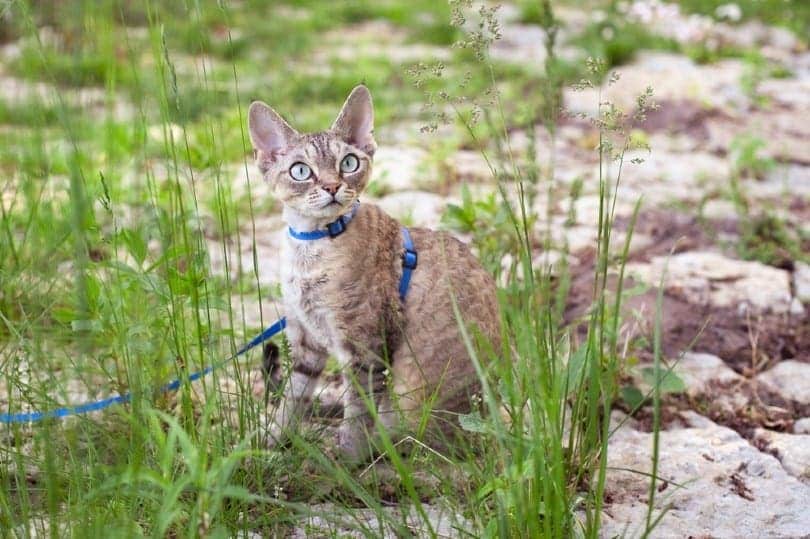
7. Safe Environments
Products like over-the-counter medications, prescriptions, and vitamins can make cats ill. Foods such as garlic, chocolate, and raisins are toxic to felines. Plants and cleaning products can also be seriously problematic.
Long, thin items such as yarn and tinsel can cause health problems if ingested, so they should always be securely locked away. National Pet Wellness Month is the perfect time to do a quick home safety review and ensure that potentially toxic products and dangerous items are secured and inaccessible for cats.
Conclusion
National Pet Wellness Month occurs every October. It’s a time when veterinarians engage in outreach and social media campaigns to get the word out about the importance of pet wellness and ensure cats have everything they need to stay happy and healthy. Regular well-cat checkups ensure that health issues are caught as early as possible, but there are several ways you can help your cat at home. Brushing their teeth, trimming their nails, providing a well-balanced diet, and providing daily exercise can keep cats in top shape at every age.
Featured Image Credit: 89stocker, Shutterstock

